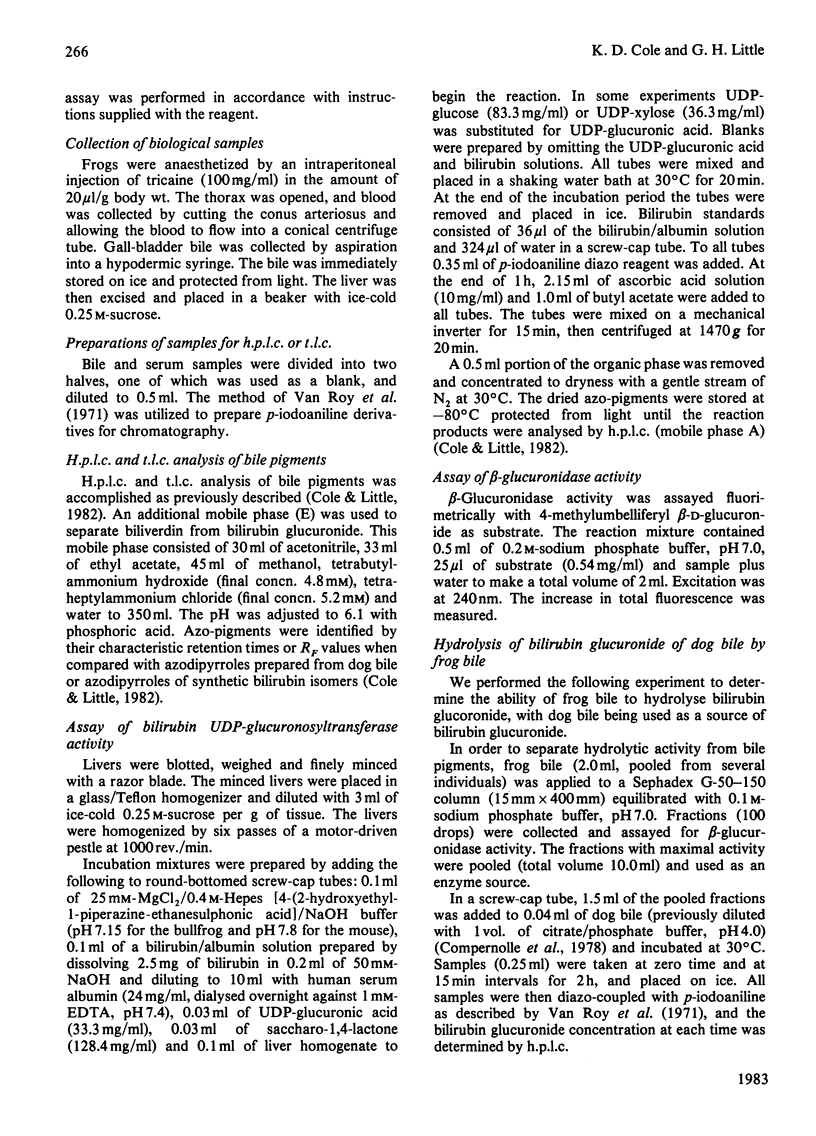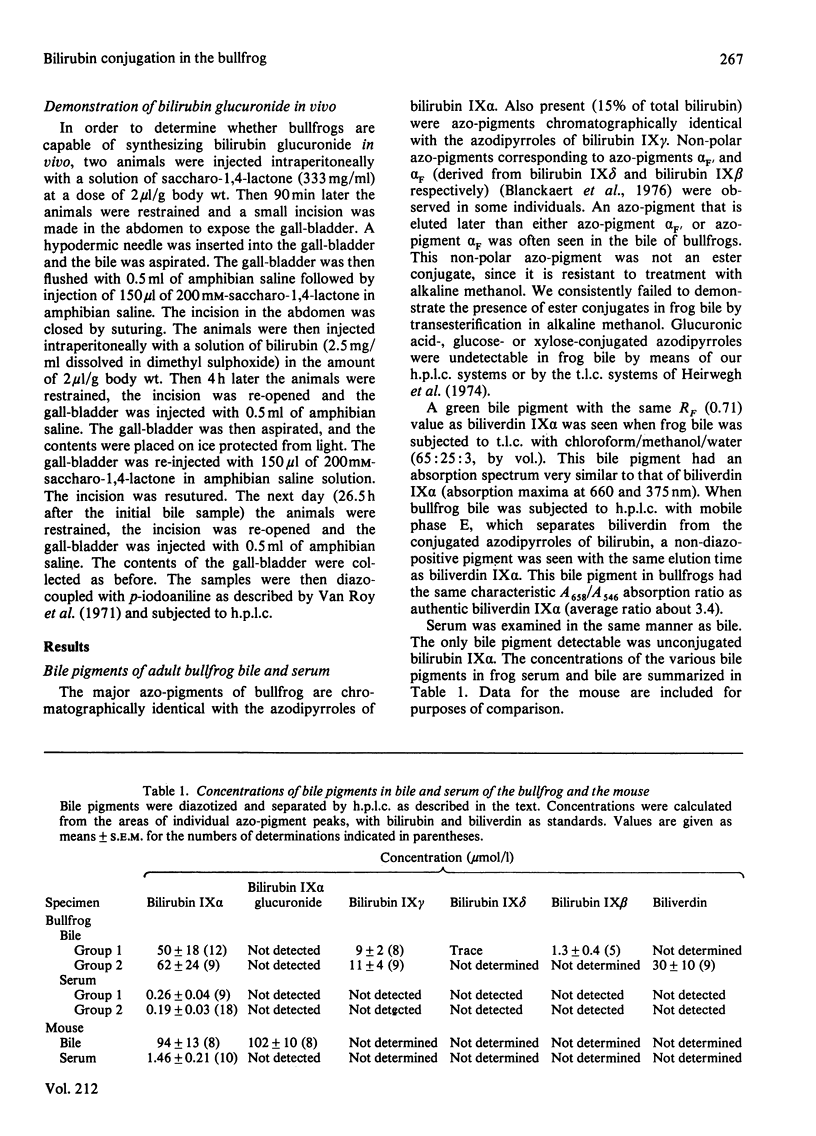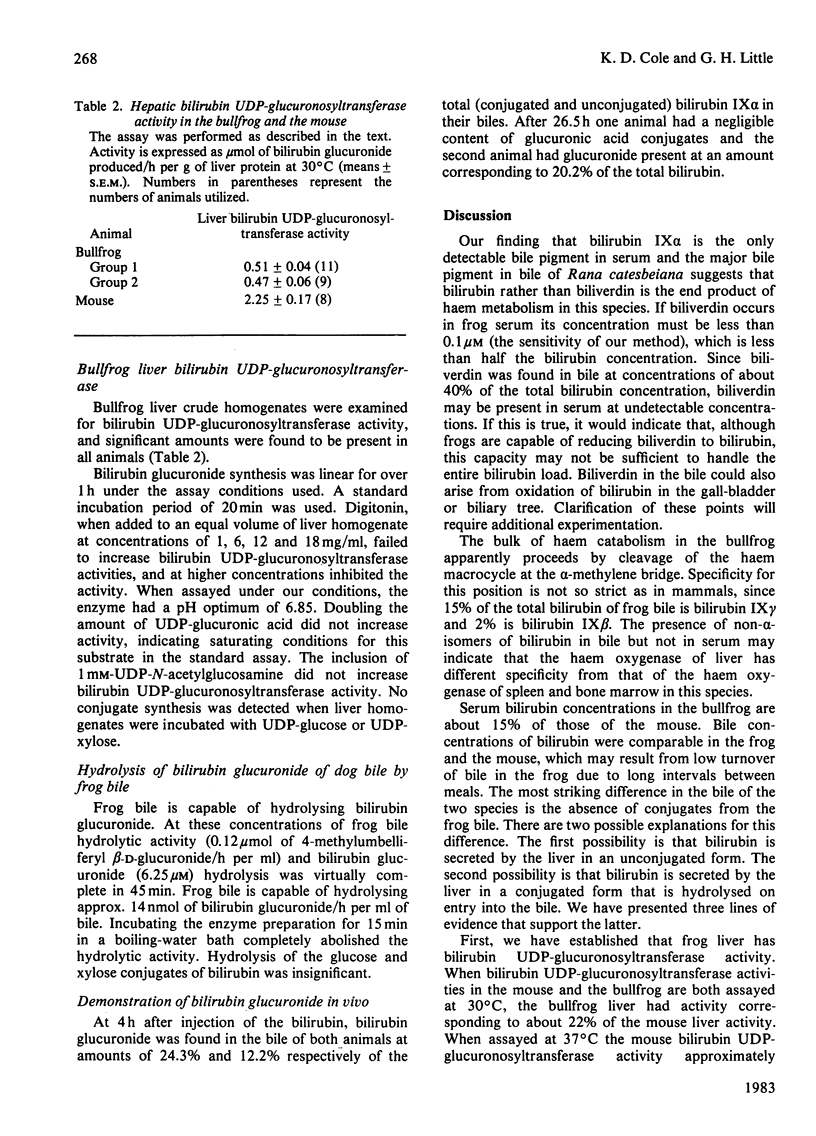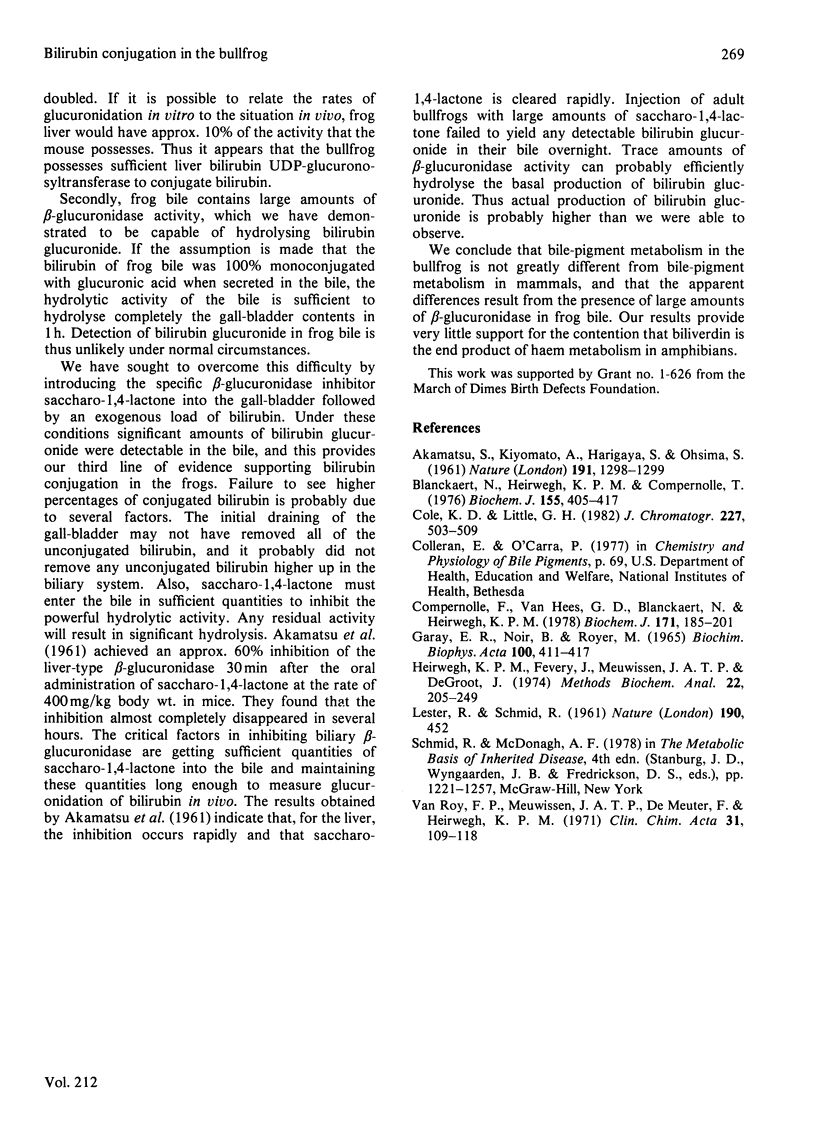Abstract
Bile pigments of bile and serum of Rana catesbeiana were investigated by means of high-pressure liquid chromatography. The major pigment in both bile and serum was bilirubin IX alpha. Bilirubin UDP-glucuronosyltransferase activity was found in the livers of all animals examined, but no conjugated bilirubin was detectable in the bile. Frog bile was found to contain large amounts of beta-glucuronidase. When the beta-glucuronidase inhibitor saccharo-1,4-lactone was introduced into the gall bladder followed by an exogenous bilirubin load, bilirubin glucuronide appeared in the bile.
Full text
PDF




Selected References
These references are in PubMed. This may not be the complete list of references from this article.
- AKAMATSU S., KIYOMOTO A., HARIGAYA S., OHSHIMA S. Inhibition of beta-glucuronidase by oral administration of D-glucosaccharo-1,4-lactone. Nature. 1961 Sep 23;191:1298–1299. doi: 10.1038/1911298a0. [DOI] [PubMed] [Google Scholar]
- Blanckaert N., Heirwegh K. P., Compernolle F. Synthesis and separation by thin-layer chromatography of bilirubin-IX isomers. Their identification as tetrapyrroles and dipyrrolic ethyl anthranilate azo derivatives. Biochem J. 1976 May 1;155(2):405–417. doi: 10.1042/bj1550405. [DOI] [PMC free article] [PubMed] [Google Scholar]
- Cole K. D., Little G. H. Isocratic high-performance liquid chromatography of bile pigments. J Chromatogr. 1982 Feb 12;227(2):503–509. doi: 10.1016/s0378-4347(00)80404-1. [DOI] [PubMed] [Google Scholar]
- Compernolle F., Van Hees G. P., Blanckaert N., Heirwegh K. P. Glucuronic acid conjugates of bilirubin-IXalpha in normal bile compared with post-obstructive bile. Transformation of the 1-O-acylglucuronide into 2-, 3-, and 4-O-acylglucuronides. Biochem J. 1978 Apr 1;171(1):185–201. doi: 10.1042/bj1710185. [DOI] [PMC free article] [PubMed] [Google Scholar]
- GARAY E. R., NOIR B., ROYER M. BILIVERDIN PIGMENTS IN GREEN BILES. Biochim Biophys Acta. 1965 May 4;100:411–417. doi: 10.1016/0304-4165(65)90010-3. [DOI] [PubMed] [Google Scholar]
- Heirwegh K. P., Fevery J., Meuwissen J. A., De Groote J., Compernolle F., Desmet V., Van Roy F. P. Recent advances in the separation and analysis of diazo-positive bile pigments. Methods Biochem Anal. 1974;22:205–250. doi: 10.1002/9780470110423.ch5. [DOI] [PubMed] [Google Scholar]
- LESTER R., SCHMID R. Bile pigment excretion in amphibia. Nature. 1961 Apr 29;190:452–452. doi: 10.1038/190452a0. [DOI] [PubMed] [Google Scholar]
- Van Roy F. P., Meuwissen J. A., De Meuter F., Heirwegh K. P. Determination of bilirubin in liver homogenates and serum with diazotized p-iodoaniline. Clin Chim Acta. 1971 Jan;31(1):109–118. doi: 10.1016/0009-8981(71)90367-6. [DOI] [PubMed] [Google Scholar]


